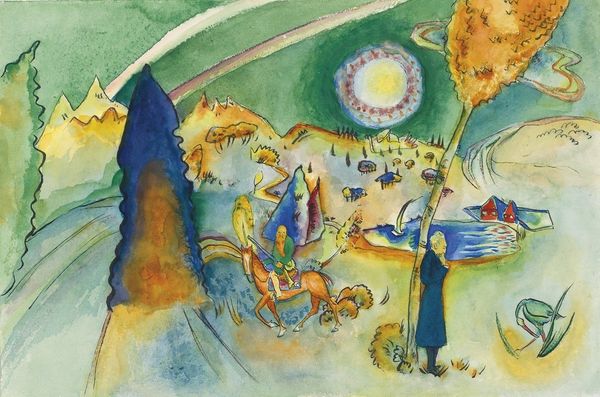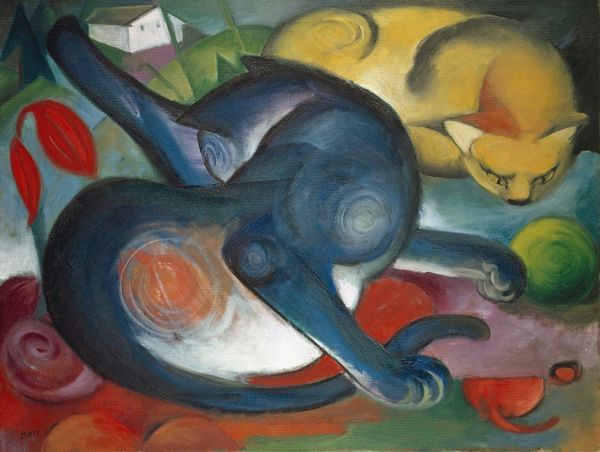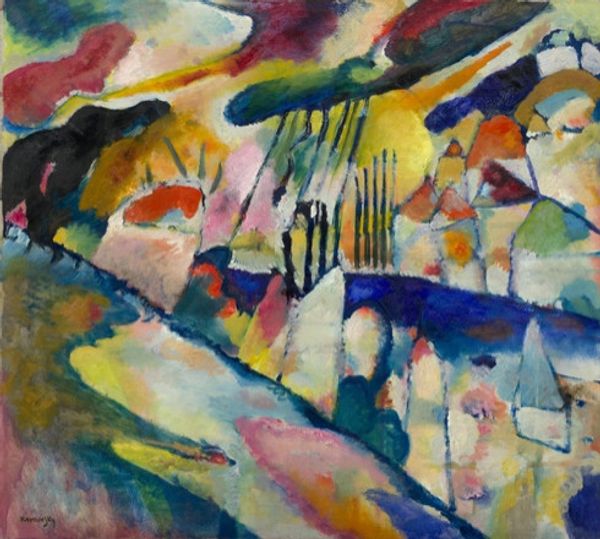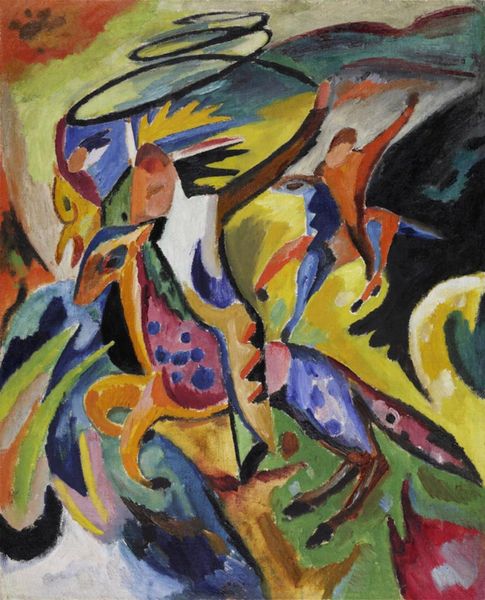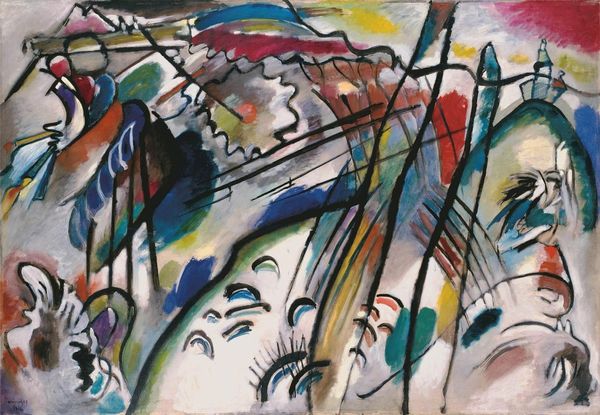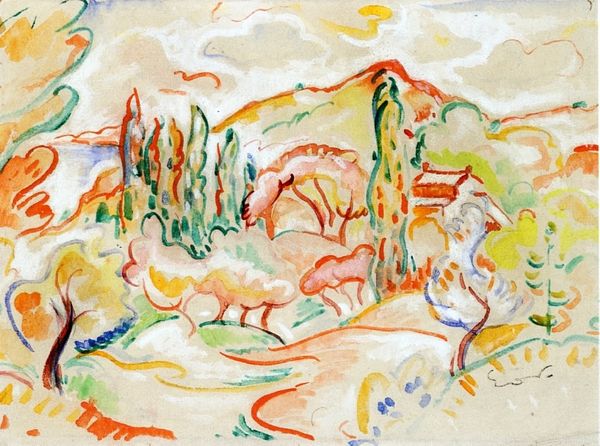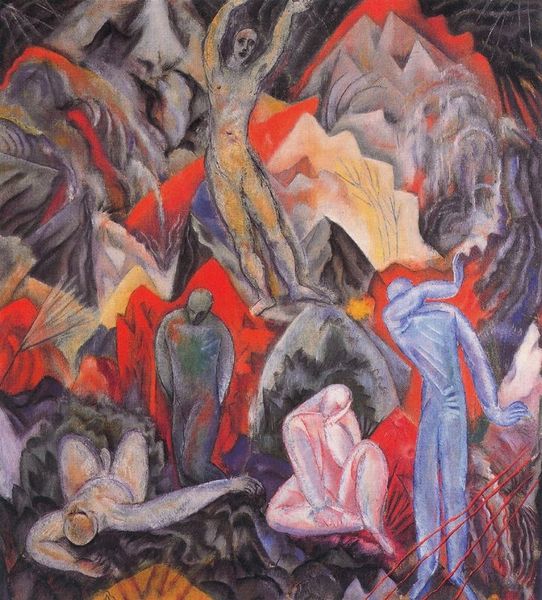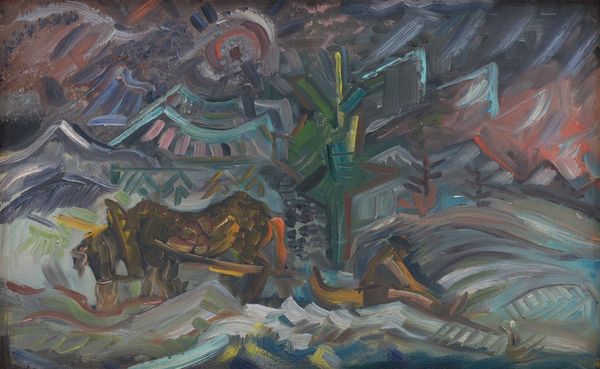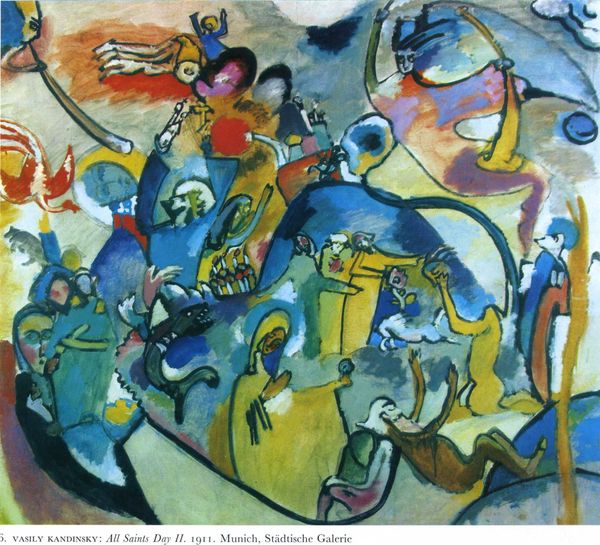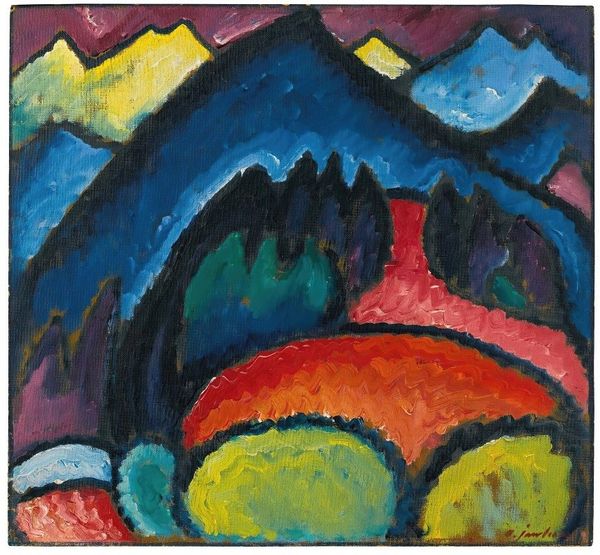
Dimensions: 51.3 x 62.0 cm
Copyright: Public Domain
Curator: I find myself completely transported by the dreamy quality of this canvas. It's "Deer in Japanese Landscape" by Jean Bloé Niestlé, painted in 1918. Look at those hazy blues and oranges. Editor: Yes, immediately there's a feeling of a hushed fairytale – the colors, almost muted, lend it that quality. I’m struck by how flattened the perspective feels, as though all the pictorial elements are pushed forward. It's like a tapestry woven with symbolism, not really a landscape in the conventional sense. Curator: Niestlé really blended her post-impressionist sensibilities with orientalist themes, don’t you think? It’s not strictly representational, it is almost dreamlike. The deer feel symbolic, mythic. Editor: Exactly! The deer are powerful symbols in various cultures – grace, gentleness, and renewal are often tied to them. Seeing three deer with different fur colors evokes the circle of life and reincarnation. Then you have the landscape; the mountain, a powerful, phallic archetype relating to stability, but destabilized due to its unreal presentation, making me think about the shifting perspectives on identity that come with exile. Curator: I never thought of it that way! You are spot on about the identities of exile shifting. Niestlé spent her life traveling between Europe and Japan...I’d bet she felt pulled between worlds and cultural symbols and even artistic techniques. I think you see that play out on the canvas. It isn’t just one singular landscape is it? Editor: It absolutely isn't. This reminds us that every picture hides a thousand layers beneath its immediate beauty, telling a story as intricate and multi-layered as human experience itself. This work really offers so much, not only to appreciate on a visual level but for deeply understanding the personal expression it attempts to make known. Curator: It's truly an exceptional and rare thing. So ethereal and calming. A treasure to consider from all these perspectives.
Comments
stadelmuseum almost 2 years ago
⋮
Until 1916, the Swiss Jean Bloé Niestlé painted naturalistic depictions of animals – despite his close ties to the Expressionist “Blaue Reiter” artists. After his friend Franz Marc’s death, he fundamentally changed his style: like Marc, he now depicted deer, for example, simplified and lying on the ground. They are embedded in what he himself called a “Japanese landscape”. The vegetation and geology are made up of simple colour fields and clearly contoured areas. Niestlé also drew inspiration from Japanese woodblock prints and Bavarian reverse glass painting, which were also models for the artists of the “Blaue Reiter”.
Join the conversation
Join millions of artists and users on Artera today and experience the ultimate creative platform.
